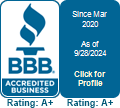
Choosing the Right Student Loan: Types and Tips
Embarking on a journey toward higher education often requires financial support beyond what one can readily afford. According to a 2023 report of The Trends in College Pricing and Student Aid, released by the College Board, the average annual cost (tuition and fees) for students attending four-year private colleges for the 2023–2024 academic year was $41,540.
You are not alone if sticker shock hits you when you see that price tag. Even with personal savings and scholarships, which might be helpful, parents and students will not always be able to cover the costs. Thus, student loans have become a staple for millions worldwide, offering a pathway to academic pursuits and career aspirations.
However, with various options available, each with its terms and conditions, navigating the world of student loans can feel like traversing a labyrinth. But armed with the proper information, you can make choices that set you up for financial success. Let’s explore the landscape of student loans and tips to choose the best one for your needs.
Types of Student Loans
Federal and Private Loans are the two main types of Student Loans. A combination of Federal and Private Student Loans may be an option for you, depending on your financial circumstances. Let’s take a look at each type of loan in detail.
I. Federal Student Loans
Federal student loans are loans funded by the federal government, offering benefits such as fixed interest rates, flexible repayment options, and borrower protections. Here are the main types of federal student loans:
i. Direct Subsidized Loan
ii. Direct Unsubsidized Loan
iii. Direct Plus Loans
iv. Direct Consolidation Loans
Direct Subsidized Loans: These loans are available to eligible undergraduate students who have proven their financial need. The government pays the interest as long as you are a part or full-time student. Thus, the government covers part of your educational expenses as you pursue your degree. There is a six-month grace period after graduation, during which you can pay the principal and avoid further interest charges on the loan. You might also be eligible for forbearance or deferment based on your financial status.
Direct Unsubsidized Loans: Students in graduate, undergraduate, and professional programs, with or without financial need, are eligible for these loans. Interest accrues from the day you receive the loan amount, and you are responsible for paying it. Depending on your preference, you can capitalize the interest or let it build up and added to the principal amount. You will have to pay back more if you capitalize the interest.
Direct Plus Loans: These loans are also known as Parent PLUS Loans and Grad PLUS Loans. They are available to graduate or professional students and parents of dependent undergraduate students to help cover education expenses not covered by other financial aid. PLUS loans require a credit check. Borrowers with a bad credit history must fulfill additional conditions.
The maximum you are eligible to borrow from a Plus loan is decided by your school, based on your existing financial aid and the cost of attendance.
A fixed interest rate is another benefit of PLUS Loans over many private student loans. However, interest is assessed at every stage of the loan process and capitalized at specific points, which might raise the overall cost of your federal loan.
A Direct Consolidation Loan: You can merge two or more loans into one with a Federal Education Loan. The weighted average of the rates on the aggregated loans serves as the basis for the fixed interest rate on this loan. Applying for a Direct Consolidation Loan is free of cost. You can do it online at the Federal Student Aid (FSA) website or by contacting your loan servicer.
II. Private Student Loans
Credit unions, banks, and other private lenders provide Private Student Loans. These loans sometimes have variable interest rates and less borrower protections than federal loans. Here are some key points to consider about private student loans:
- Credit Check: Private lenders typically require a credit check, and the interest rate you receive may depend on your creditworthiness.
- Cosigner: If you have a limited credit history or income, you may need a cosigner, such as a parent or guardian, to qualify for a private student loan.
- Interest Rates and Terms: Private loans may offer competitive interest rates for borrowers with excellent credit but may have less favorable terms when compared to Federal Loans.
- Interest Not Tax Deductible: Further, in contrast to federal loans, depending on your private loan provider, the interest you pay on a private loan might not be tax deductible.
- Repayment Plans: The time required to repay a private student loan could range from five to fifteen years, depending on the lender.
- No Loan Forgiveness or Deferment Plans: Private student loans do not offer student debt forgiveness and deferment plans. Some federal student loan forgiveness programs are available, but you must work in the public sector for several years to be eligible.
- Cannot be consolidated with Direct Consolidation Loan: You cannot consolidate a private loan with a government Direct Consolidation Loan. However, you may be able to refinance them.
III Other Options
You may have other loan alternatives depending on your location and circumstances.
State Loan Programs
Some states offer student loan programs to residents, providing additional funding options for education. Depending on the state, these loans may have varying interest rates, repayment terms, and borrower requirements. You can find programs in your state using the index maintained by the Department of Education.
Institutional Loans
Some colleges and universities offer institutional loans to students to help bridge the gap between financial aid and the cost of attendance. These loans may have different terms and conditions than federal or private loans and are typically offered directly by the institution.
Tips for Choosing the Best Student Loan:
- Understand Your Options: Before diving into student loans, take the time to understand the types available. Also, explore grants, scholarships, and work-study programs, as they can help reduce your overall loan burden.
- Assess Your Financial Needs: Calculate the total cost of your education, including tuition, books, housing, and other expenses. Recognize your financial demands and borrow what is required. Remember, every dollar you borrow needs to be repaid eventually, often with interest.
- Compare Interest Rates: Interest rates can significantly impact the total amount you’ll repay over the life of your loan. While federal loans generally have fixed interest rates, private loans may offer variable rates that can change over time. Select the most affordable alternative by comparing the rates of various lenders.
- Consider Repayment Terms: Evaluate the repayment terms offered by different lenders. Federal loans typically offer more flexible repayment plans, including income-driven options that adjust your monthly payments based on your income level. Private lenders may have less lenient terms, so choose a repayment plan that aligns with your financial situation and future goals.
- Research Loan Servicers: Once you’ve chosen a lender, research their reputation and customer service track record. They are responsible for managing your loan account and processing payments, so choose the one with a good reputation for customer satisfaction and support.
- Read the Fine Print: Carefully review and comprehend all terms and conditions before signing any loan arrangement. Pay attention to details, such as interest rates, fees, repayment schedules, and any possible penalties for early repayment or late payments. If anything is unclear, don’t hesitate to ask for clarification.
- Explore Loan Forgiveness Options: Some careers, such as teaching or public service, offer loan forgiveness programs that can reduce or eliminate your student debt. Research all available options and consider how your career path may impact your loan repayment strategy.
- Plan for the Future: Before taking on student debt, consider how it will impact your future financial goals. Will your loan payments be manageable alongside other expenses such as rent, transportation, and savings? Create a budget and financial plan to ensure you comfortably repay your loans while still achieving your long-term objectives.
Conclusion
Choosing the best student loan requires careful consideration of your financial situation and educational goals. By understanding the different types of loans available and comparing the terms and conditions offered by various lenders, you can make an informed decision that sets you up for success on your academic and financial journey.


